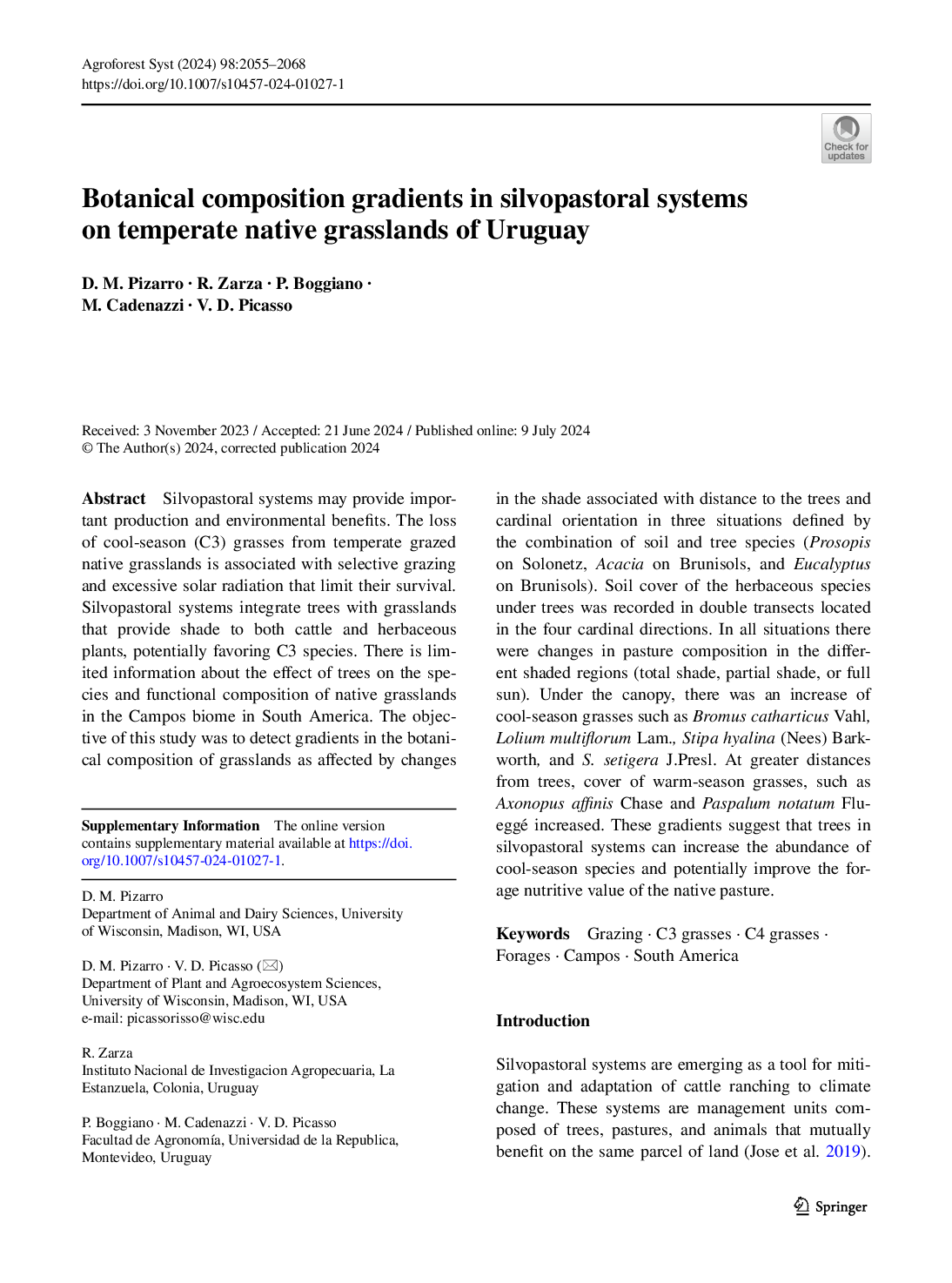ABSTRACT.- Silvopastoral systems may provide important production and environmental benefits. The loss of cool-season (C3) grasses from temperate grazed native grasslands is associated with selective grazing and excessive solar radiation that limit their survival. Silvopastoral systems integrate trees with grasslands that provide shade to both cattle and herbaceous plants, potentially favoring C3 species. There is limited information about the effect of trees on the species and functional composition of native grasslands in the Campos biome in South America. The objective
of this study was to detect gradients in the botanical composition of grasslands as affected by changes in the shade associated with distance to the trees and cardinal orientation in three situations defined by the combination of soil and tree species (Prosopis on Solonetz, Acacia on Brunisols, and Eucalyptus on Brunisols). Soil cover of the herbaceous species under trees was recorded in double transects located in the four cardinal directions. In all situations there were changes in pasture composition in the different shaded regions (total shade, partial shade, or full sun). Under the canopy, there was an increase of cool-season grasses such as Bromus catharticus Vahl, Lolium multiflorum Lam., Stipa hyalina (Nees) Barkworth,
and S. setigera J.Presl. At greater distances from trees, cover of warm-season grasses, such as Axonopus affinis Chase and Paspalum notatum Flueggé increased. These gradients suggest that trees in silvopastoral systems can increase the abundance of cool-season species and potentially improve the forage nutritive value of the native pasture. © The Author(s) 2024, Springer Nature.

